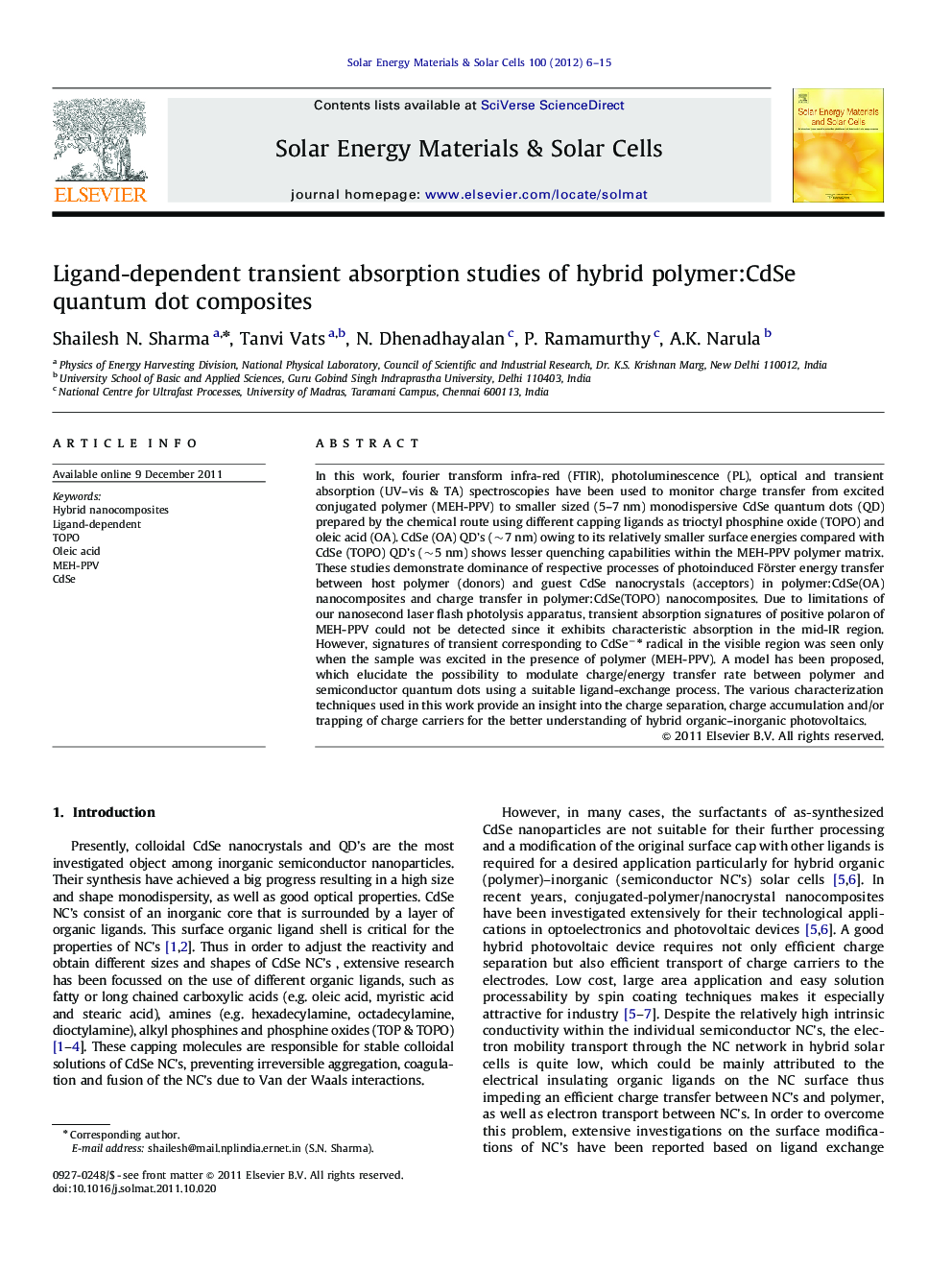| Article ID | Journal | Published Year | Pages | File Type |
|---|---|---|---|---|
| 78367 | Solar Energy Materials and Solar Cells | 2012 | 10 Pages |
In this work, fourier transform infra-red (FTIR), photoluminescence (PL), optical and transient absorption (UV–vis & TA) spectroscopies have been used to monitor charge transfer from excited conjugated polymer (MEH-PPV) to smaller sized (5–7 nm) monodispersive CdSe quantum dots (QD) prepared by the chemical route using different capping ligands as trioctyl phosphine oxide (TOPO) and oleic acid (OA). CdSe (OA) QD's (∼7 nm) owing to its relatively smaller surface energies compared with CdSe (TOPO) QD's (∼5 nm) shows lesser quenching capabilities within the MEH-PPV polymer matrix. These studies demonstrate dominance of respective processes of photoinduced Förster energy transfer between host polymer (donors) and guest CdSe nanocrystals (acceptors) in polymer:CdSe(OA) nanocomposites and charge transfer in polymer:CdSe(TOPO) nanocomposites. Due to limitations of our nanosecond laser flash photolysis apparatus, transient absorption signatures of positive polaron of MEH-PPV could not be detected since it exhibits characteristic absorption in the mid-IR region. However, signatures of transient corresponding to CdSe−⁎ radical in the visible region was seen only when the sample was excited in the presence of polymer (MEH-PPV). A model has been proposed, which elucidate the possibility to modulate charge/energy transfer rate between polymer and semiconductor quantum dots using a suitable ligand-exchange process. The various characterization techniques used in this work provide an insight into the charge separation, charge accumulation and/or trapping of charge carriers for the better understanding of hybrid organic–inorganic photovoltaics.
► Here, the role of various ligands on the optical properties of hybrid nanocomposites have been envisaged. ► A model is proposed to understand the mechanism of exciton dissociation and charge/energy transfer. ► These processes makes composites ideal candidates for efficient photovoltaic devices.
